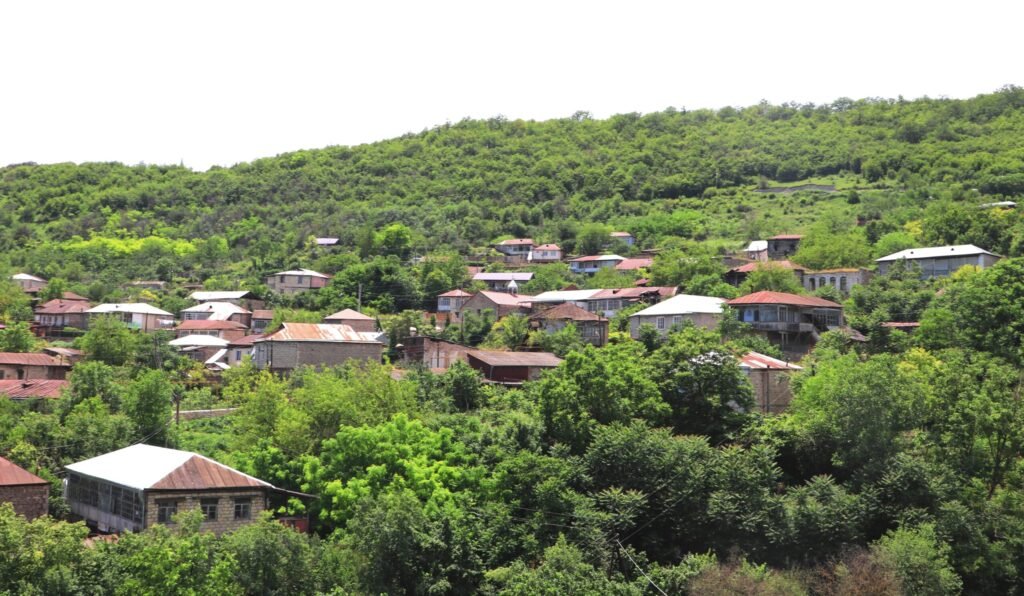
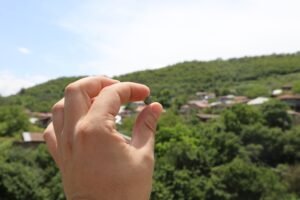
One of the exceptional and mysterious villages of Artsakh, Astghashen, is known for its star-shaped stones from which the village got its name, which appear on the ground especially after rain. Originally the name of this village was Qaraghbyur. Later it was renamed by the Azerbaijanis, but in 1988, the village was named Artsakhashen, and after some time the village got its name, Astghashen.
Fossilized animals and petrified remains of wood were found in the vicinity of the village. The star-shaped stones have a history of 145-165 million years.

According to specialists, the territory of the village used to be an ocean, and the star-shaped fossils are star-shaped bones belonging to the plant species of sea lilies.
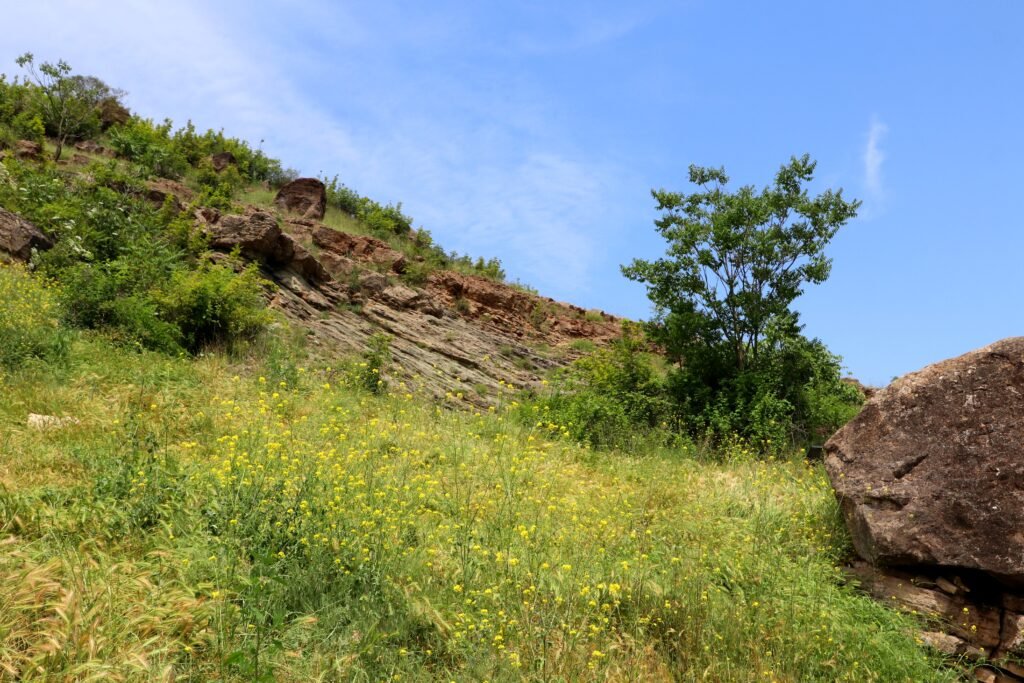
These mysterious stones changed the village into a tourist destination, and the territory is under the control of the country as a place of cultural and historical significance.

Many tourists from all over the world used to visit the village and collect star-stones, but the number of tourists declined after the war. Today, visitors of Astghashen are locals from Artsakh.
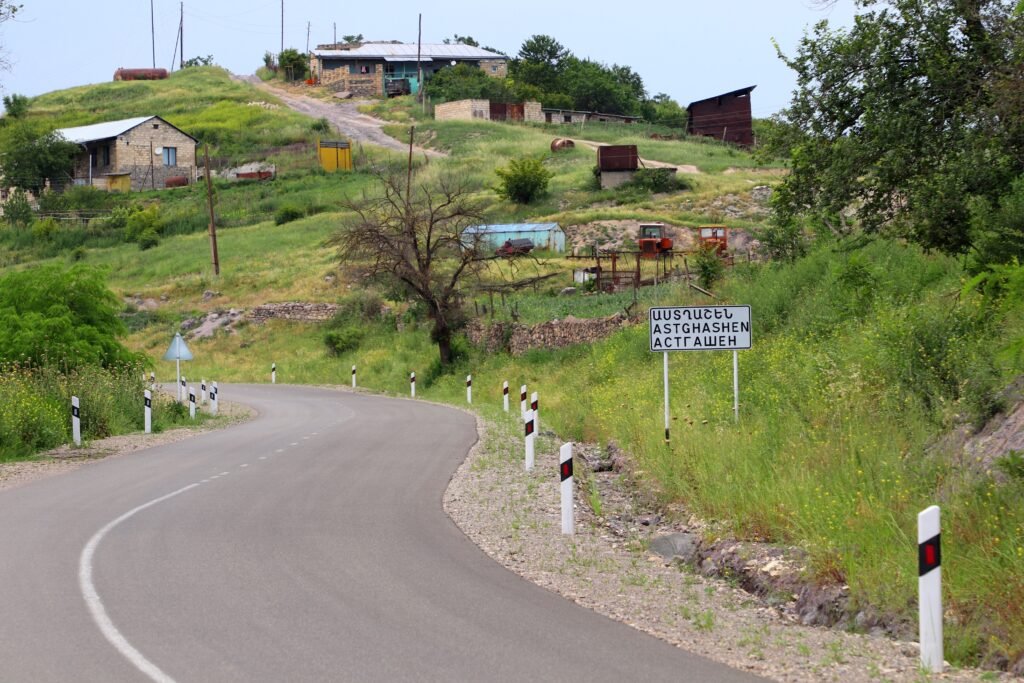
The village is located 20 km. from Stepanakert in the Askeran region. Besides the star-shaped stones, the village is also rich with its churches and holy places like Frangyulac, Kapenkhach, Chmanekhach and Yere Nhatak. A holy liturgy is held at St. Gevorg church (built in the 19th century) every Sunday.
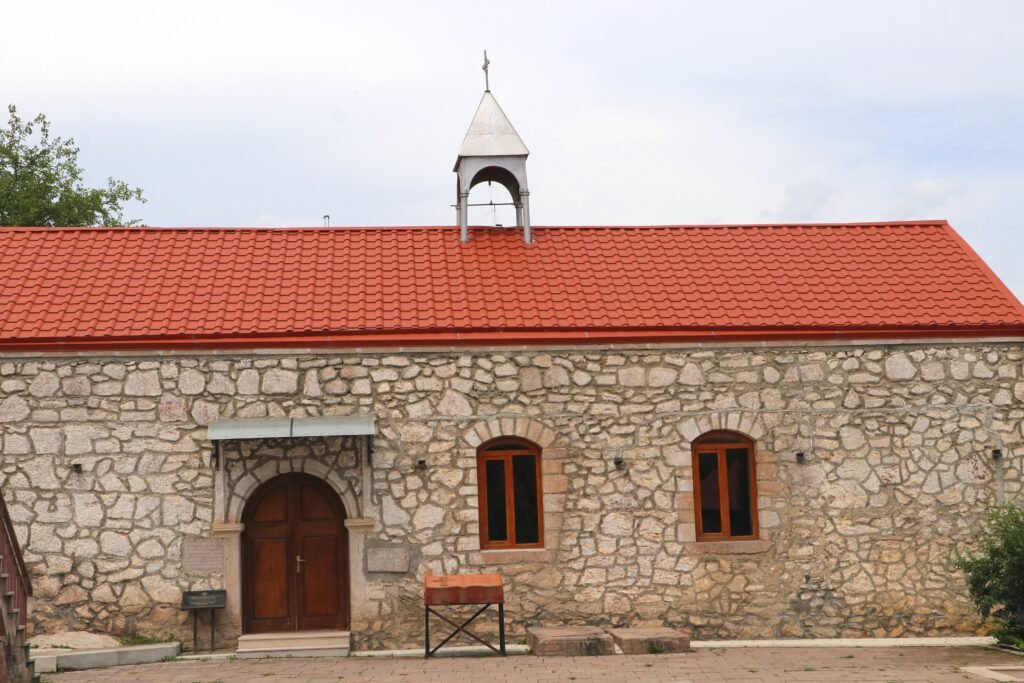
The road leading to the village was paved after the war. Astghashen has a village administration, a house of culture, a medical center, a kindergarten, an art school and a newly-built secondary school with all the necessary conditions. Construction of residential houses for displaced people started after the war.
The village wasn’t damaged during the war. After the war, many displaced families resettled there.
“All displaced and resettled families of the village were provided with houses, parts of which were completely renovated. All of them have become a part of the village’s society. Some of them are working on construction sites, and some of them are doing different hired jobs. The displaced are mostly from the region of Hadrut, but we also have people from Avetaranots, Jraghatsner and Tigranakert,” said the head of the village, Arthur Grigorian.

The main occupations of the villagers are animal husbandry and farming. The latter is more developed. There are only a few herdsmen in the village. According to Grigorian, the blockade has promoted farming.
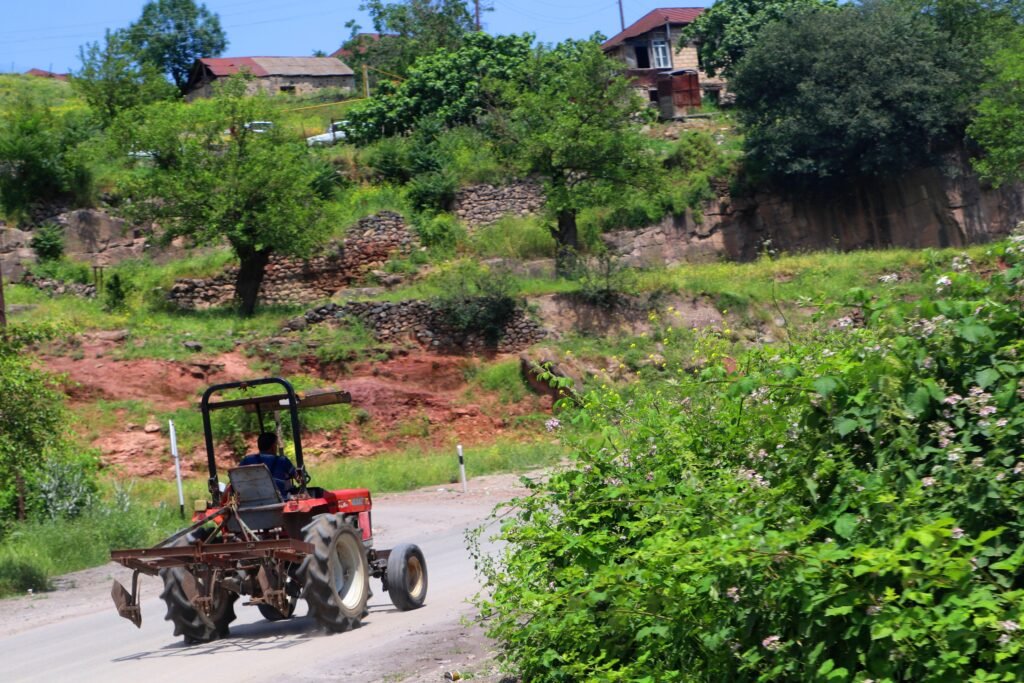
“People got engaged in the cultivation of vegetable crops. There are almost no uncultivated lands near the houses. All of them have been cultivated by the villagers so that they can solve the problem of food security themselves. Due to the heating problems, two families are engaged in greenhouse agriculture, growing greens, tomatoes and cucumbers,” Grigorian said.
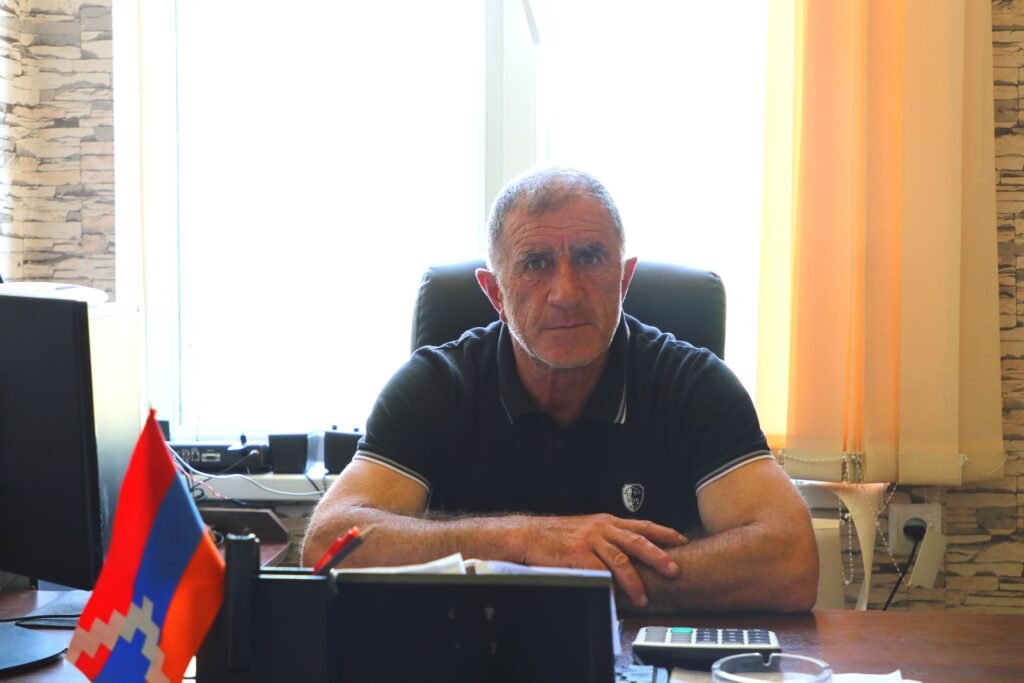
According to Grigorian, the level of unemployment among the youth of the village isn’t high. “Now, most of the youth are working in military units and newly-established modern gardens. Perhaps only 20-percent of the youth don’t have primary jobs, but the others manage to work and provide for their families,” he said.
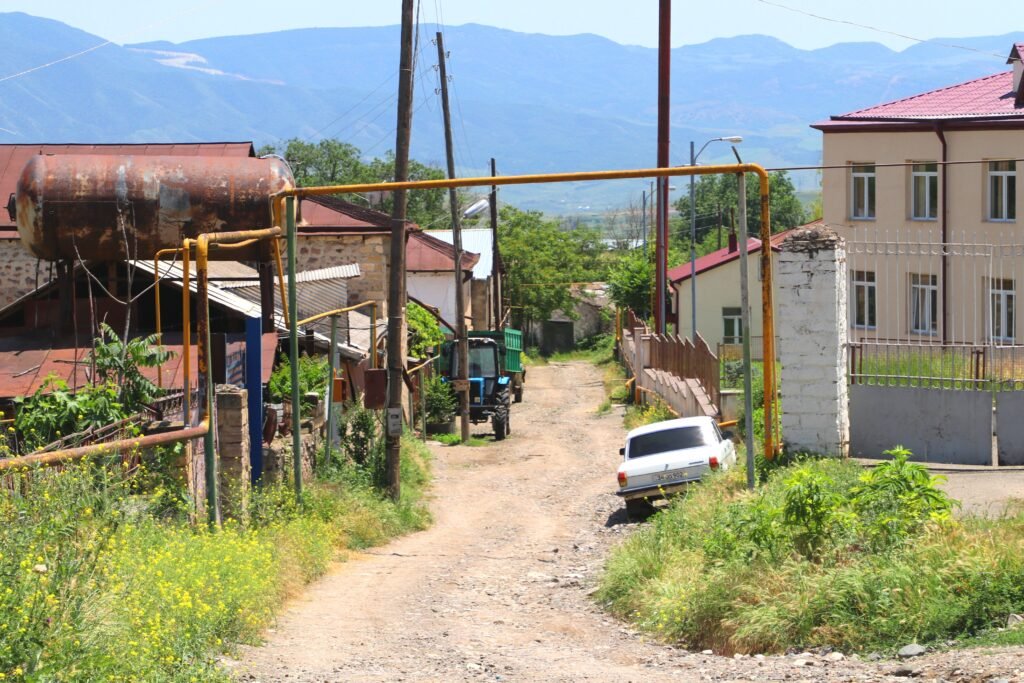
Speaking about the main problems of the village, Grigorian mentioned the lack of irrigation water and the need to repair the house of culture.
“The main issue is the lack of irrigation water. The village is provided with permanent drinking water, which is also used for the irrigation of households. Among the problems that require a solution is the need of repairing the house of culture, about which we informed the government. A lot of money is poured into building new buildings. We have mentioned several times, it isn’t worth so much money. The house of culture and the library need repairing,” Grigorian concluded.



Dear Vahagn, thank you so much for your wonderful story. I’ve read it with great interest. Please continue writing from Artsakh so we in Armenia could stay in touch. Hope to visit the place some day in the future.
Amazing story of this little yet exquisite village and it’s people. Would be wonderful to watch a documentary film about it. Thank you Vahagn
Thank you Vahagn for sharing your story of Astghashen village. Please continue to inform us about our rich heritage, natural wonders, and life in Artsakh. We stand with you!